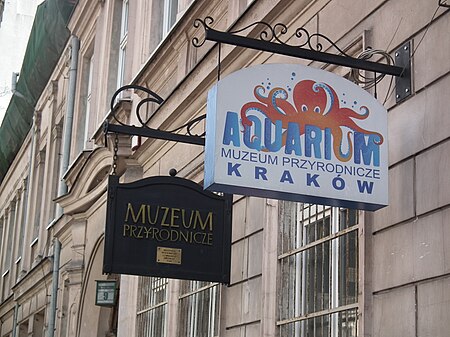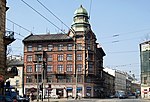Aquarium and Natural History Museum in Kraków
AC with 0 elementsAll pages needing cleanupAquaria in PolandMuseums in KrakówNatural history museums in Poland ... and 1 more
Wikipedia pages needing cleanup from December 2014

Aquarium and Natural History Museum in Kraków (formerly the Museum of Natural Science Institute of Systematics and Evolution of Animals PAS) is a public aquarium and museum at St. Sebastian 9th in Kraków, Poland. There is a crafted, perfectly preserved, prehistoric woolly rhino, the only completely preserved specimen of this animal that went extinct more than 12 thousand years ago.
Excerpt from the Wikipedia article Aquarium and Natural History Museum in Kraków (License: CC BY-SA 3.0, Authors, Images).Aquarium and Natural History Museum in Kraków
Józefa Dietla, Krakow Stare Miasto (Old Town)
Geographical coordinates (GPS) Address Nearby Places Show on map
Geographical coordinates (GPS)
| Latitude | Longitude |
|---|---|
| N 50.0554814 ° | E 19.9414552 ° |
Address
Historyczne centrum Krakowa
Józefa Dietla
31-073 Krakow, Stare Miasto (Old Town)
Lesser Poland Voivodeship, Poland
Open on Google Maps











